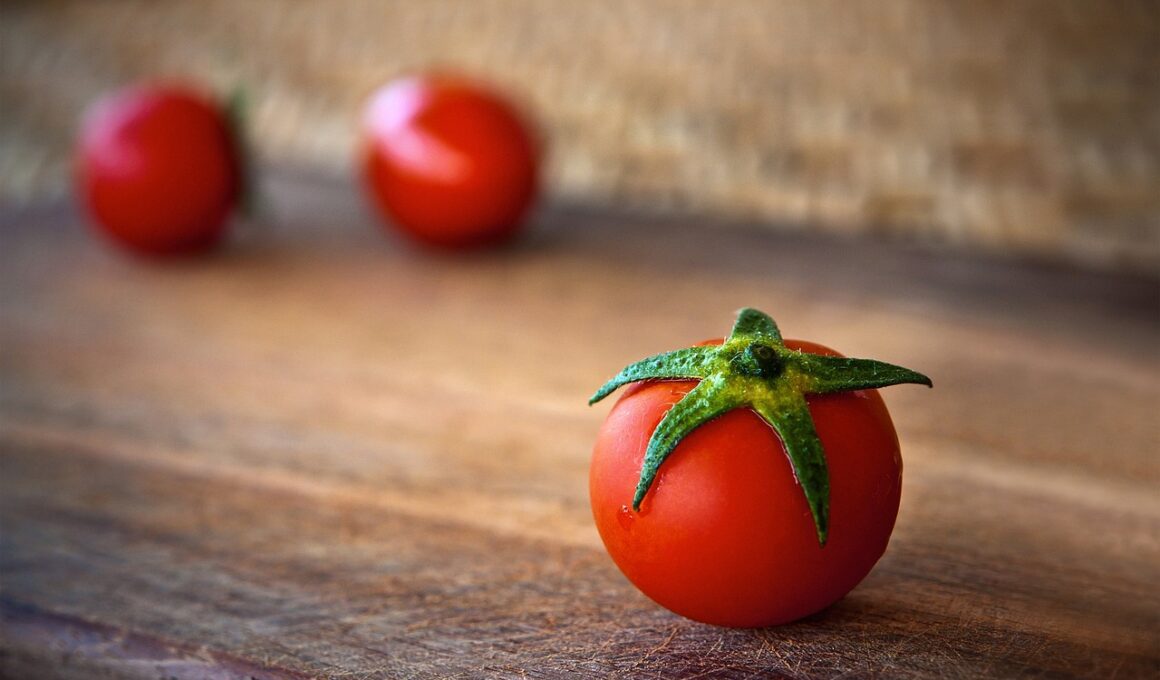Growing tomatoes can be a rewarding experience, and the best way to ensure you get the most delicious tomato flavor is to make sure your tomatoes are properly cared for. With just a few simple steps you can take your tomatoes from good to great!
In this article we will discuss what makes tomatoes taste better when growing, so read on to learn more about how you can get the most out of your crop.
The key to success when it comes to growing tasty tomatoes is selecting the right variety for your climate and garden conditions. Different varieties have different flavors and textures, so finding one that suits your needs is crucial in getting the most flavorful harvest possible.
Additionally, providing the right amount of water, sunlight, and nutrients is essential for optimal growth and flavor development. Pruning away any diseased or damaged leaves also helps promote healthier plants with fewer pests and diseases that can affect flavor as well.
Finally, proper fertilizing techniques help boost flavor even further while avoiding overfertilization which can lead to bitter tasting fruit. Harvesting at the peak of ripeness ensures maximum sweetness too!
Select the Right Variety
Choosing the right variety of tomato is key for getting delicious results! With natural selection, you can find different types of tomatoes that are best suited to your climate and soil conditions.
If you’re growing in a container garden, look for varieties that are specifically designed for this type of gardening as they usually require less maintenance and produce better yields.
When selecting a variety, make sure it’s one that produces fruit with the flavor and texture you desire. Once you have chosen your tomato plant, give it plenty of space to grow so it can reach its full potential. Planting them far enough apart prevents overcrowding which can lead to disease and reduce yields.
Additionally, make sure the plants get adequate sun exposure throughout the day as tomatoes need at least 6-8 hours of sunlight to grow properly. Finally, pay attention to watering needs as too much or too little water can affect the taste of your tomatoes negatively.
Keeping these tips in mind will help ensure you harvest tasty tomatoes!
Provide the Right Conditions
You can make sure your tomatoes taste delicious by providing the right conditions. Start by making sure they get plenty of sunlight – at least six hours a day – and water them regularly.
Amend the soil with organic matter to improve drainage and provide vital nutrients for optimal growth.
Provide Adequate Sunlight
Offering your tomato plants plenty of sunlight not only aids in their growth, but also ensures they’ll produce flavorful fruit. When it comes to growing tomatoes organically, the intensity and duration of sunshine are key factors in developing flavor.
Make sure your tomato plants get at least six hours of direct sunlight each day throughout the growing season. Also, don’t forget to use soil amendments such as compost or aged manure before planting to help your tomatoes thrive. This will ensure that the soil is well-nourished and can adequately provide the necessary nutrients for a healthy plant with great tasting fruits!
Water Regularly
Watering your tomato plants regularly will ensure they receive the moisture they need to produce high-quality fruits. The frequency and amount of water you give your plants depends on the soil drainage in your area, so pay attention to how quickly water is absorbed into the ground.
If you notice that it doesn’t take long for puddles to disappear, then you likely don’t need to water as frequently as those with slower draining soils. When watering, try to soak the soil thoroughly, but not so much that it becomes soggy or waterlogged – this can cause root rot and other problems with your tomatoes.
Providing adequate moisture is an important part of helping tomatoes reach their full potential in terms of flavor.
Amend the Soil
You can boost the flavor of your tomatoes by amending the soil with organic matter. Amending the soil with organic matter can significantly improve the health of your tomato plants, helping them reach their full potential.
To enhance the texture and flavor of your tomatoes, consider trying these tips:
- Invest in a soil testing kit to measure pH levels, nitrogen content, and mineral composition.
- Incorporate compost or composted manure into the soil for added nutrients and beneficial microorganisms.
- Utilize mulching techniques to retain moisture and reduce weed growth.
By following these simple steps, you can help ensure that your tomatoes have access to enough nutrients for optimal growth while also improving the taste and texture of your harvest!
Prune for Flavor
Pruning regularly helps ensure the sweetest fruit! Pruning tomatoes is a great way to increase the flavor of your crops. It also helps promote aeration and prevents disease, as it allows more air to flow through the plant and reduces moisture on the leaves.
Pruning should be done in late winter or early spring before they start putting out new growth. You can prune away any dead or damaged branches, and use container gardening techniques like mulching to help conserve water and keep soil moist for better flavor.
When you’re ready to prune your tomato plants, make sure you use sharp shears and that you’re only removing about 1/3 of each branch. This will help shape your plant while allowing enough foliage left over so that the plant can still photosynthesize properly. Also consider removing some of the lower leaves from each stem, especially those that may have been affected by fungal diseases or pests.
Remember to fertilize regularly during growth season with organic matter such as compost or manure for best results. And don’t forget to water consistently – this will help keep your tomatoes juicy and flavorful!
With a little bit of love and dedication, you’ll be able to enjoy delicious homegrown tomatoes all season long!
Protect from Pests and Diseases
Taking care of your tomato plants with regular pruning and fertilizing can help protect them from pesky pests and diseases! To keep your tomatoes safe, you should employ several strategies to combat weeds, rotate crops, and manage disease. Here are a few tips for keeping your tomato plants healthy:
-
Combat Weeds:
-
Hand-pulling: Remove any weeds as soon as they appear.
-
Mulching: Use mulch to cover the soil around the base of the plant, preventing weed growth.
-
Rotate Crops: Plant tomatoes in a different location each season to reduce the chance of disease build up in the soil.
-
Manage Disease: Be sure to inspect plants regularly for signs of infection and treat promptly if needed. Prune off any infected branches and dispose of them away from other plants.
With these simple steps, you can ensure that your tomatoes stay healthy all season long! By taking proper precautions like these, you can reduce potential threats and enjoy delicious home-grown tomatoes every year!
Fertilize Appropriately
Fertilizing your tomatoes with the right nutrients can help ensure they thrive and produce an abundance of fruit! Picking the best fertilizer for your tomatoes is key to getting the most out of them. The type of fertilizer you choose should depend on what kind of soil you have, as well as the pH level and amount of organic material present.
Additionally, some fertilizers are designed specifically for tomato plants, so those may be worth considering if you want to get maximum growth from your tomatoes.
Another important factor in successful tomato growth is mulching. Mulch helps keep the soil moist by preventing water evaporation while also controlling weed growth – both critical components to keeping your tomato plants healthy.
There are a variety of mulching techniques that can be used depending on how much space you have available and what kind of environment you live in – just make sure not to overdo it!
Finally, monitoring your plants’ progress regularly is important because sometimes even when all conditions appear optimal, something else might be off balance that needs addressing.
Keep an eye out for signs that indicate certain problems such as discolored leaves or wilting stems and adjust accordingly – this can make all the difference in getting juicy, delicious tomatoes come harvest time!
Harvest at the Right Time
Now that you know how to properly fertilize your tomatoes, it’s time to talk about harvesting them at the right time. Knowing when to harvest is key in ensuring that your tomatoes will taste their very best.
The timing of your harvest can be affected by a variety of factors including soil preparation and climate conditions. If you have prepared the soil for optimal growth and maintained it appropriately, your plants should be ready for harvest within eight weeks from planting for most varieties.
If this is the case, look for signs that your tomatoes are ripe such as color change (from green to red) and softening of the skin when lightly touched. It’s important not to wait too long or else they may become overripe resulting in less flavor and a mealy texture.
When harvesting, make sure you use pruning shears or scissors so that the stem remains intact – this will help ensure that no disease is spread through contact with the soil or other plants. Doing so also helps protect against any damage to the tomato itself which could cause bruising and reduce its shelf-life after picking.
With all these tips in mind, you’ll be able to reap sweet rewards from your garden!
Frequently Asked Questions
How do I know which variety of tomato to choose?
When it comes to container gardening, picking the right variety of tomato can make all the difference. With so many options, it can be hard to know what type will work best for your needs.
The most important things to consider are taste, size, climate, and watering techniques. Consider which types of tomatoes you like the flavor of, as this will play a large role in determining which variety you should choose.
Additionally, think about how much space you have available for a particular plant and if the local climate is suited for that specific type of tomato. Lastly, research different watering techniques and decide which one works best with your garden setup.
Choosing a variety that meets your needs will ensure delicious tomatoes in no time!
What type of soil and environment do tomatoes need to thrive?
You need the right soil and environment to grow healthy, delicious tomatoes. Opt for well-draining, nutrient-rich soil that’s slightly acidic.
Make sure your soil is regularly watered with a watering technique that provides even coverage but not too much water.
For extra nutrition, consider adding organic fertilizers like compost or manure to the mix.
With these tips, you’ll be growing tasty tomatoes in no time!
How do I know when to prune for flavor?
You need to prune your tomatoes for flavor. Pruning helps ensure that the plant puts its energy into producing fruit, rather than leafy growth.
To ensure that you get the tastiest tomatoes, water them regularly and use a fertilizer specific to tomatoes. Pay attention to watering frequency – too much or too little can have an effect on taste.
Additionally, be sure to use a balanced fertilizer type so that your tomato plants receive all of the nutrients they need for maximum flavor.
How can I prevent pests and diseases on my tomatoes?
You can help protect your tomatoes from pests and diseases by using natural predators and companion planting. Natural predators include ladybugs, lacewings, and parasitic wasps that feed on common tomato pests.
Companion planting involves growing plants near your tomatoes to deter or attract certain pests. Examples of companion plants for tomatoes include basil, parsley, garlic, onions, marigolds, nasturtiums, borage, and chives.
These methods are a safe and easy way to keep your tomato garden healthy without the need for chemical solutions.
How much fertilizer should I use for my tomatoes?
When growing tomatoes, it’s important to use the right amount of fertilizer. A general rule of thumb is to fertilize every two weeks with an all-purpose fertilizer such as 10-10-10.
To get the best results, water your tomatoes regularly and ensure they get at least 6 hours of sunlight each day. You can also supplement with specific fertilizers for tomatoes if desired.
Keep in mind that overfertilizing can lead to problems like leaf curl and blossom end rot, so follow instructions carefully when using any type of fertilizer on your tomato plants.
Conclusion
You want your tomatoes to taste great, and now you know how to make it happen.
Choose the right variety of tomato for your climate and harvest when they’re ripe.
Make sure they get plenty of light, water them regularly, prune for flavor, and protect from pests and diseases.
Don’t forget to fertilize appropriately too!
With a bit of effort, you can have delicious tomatoes that’ll be the envy of all your friends.
Enjoy the fruits of your labor – literally!









